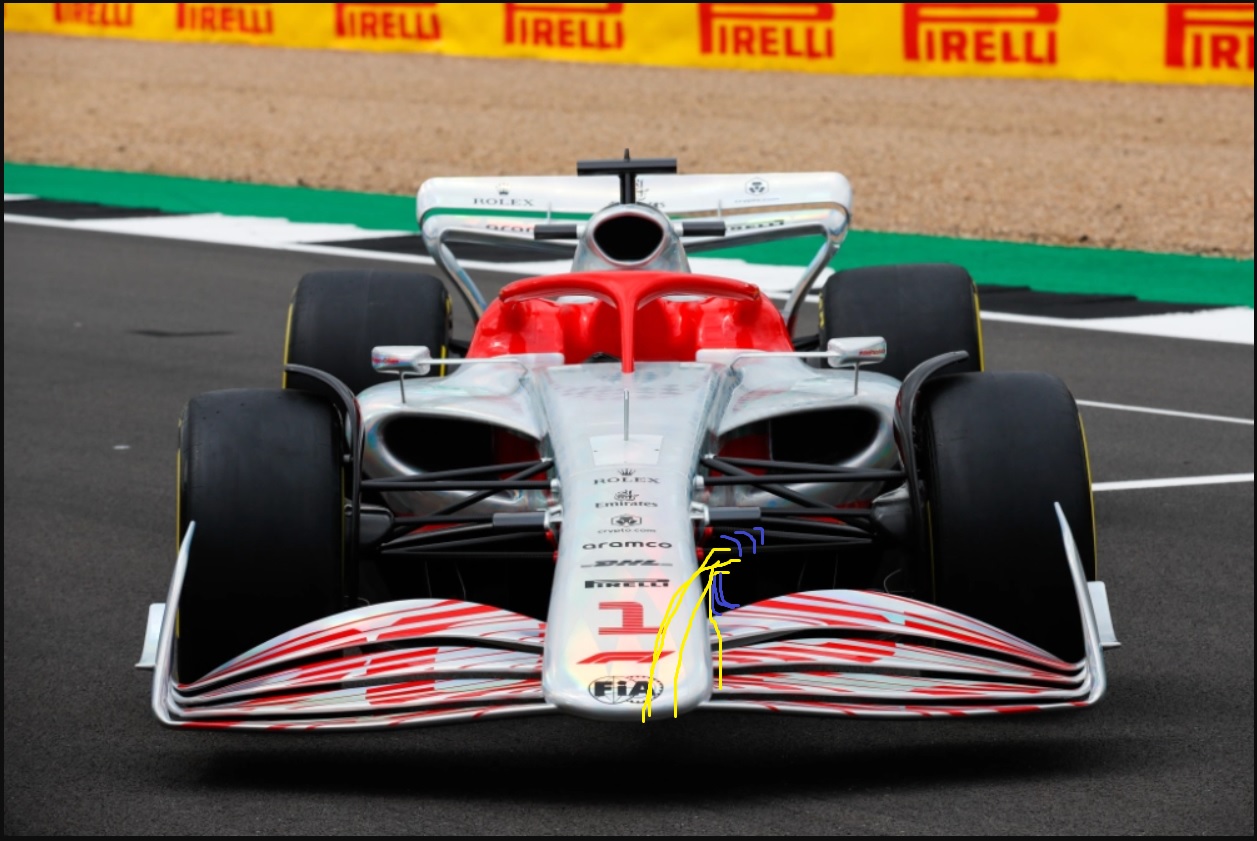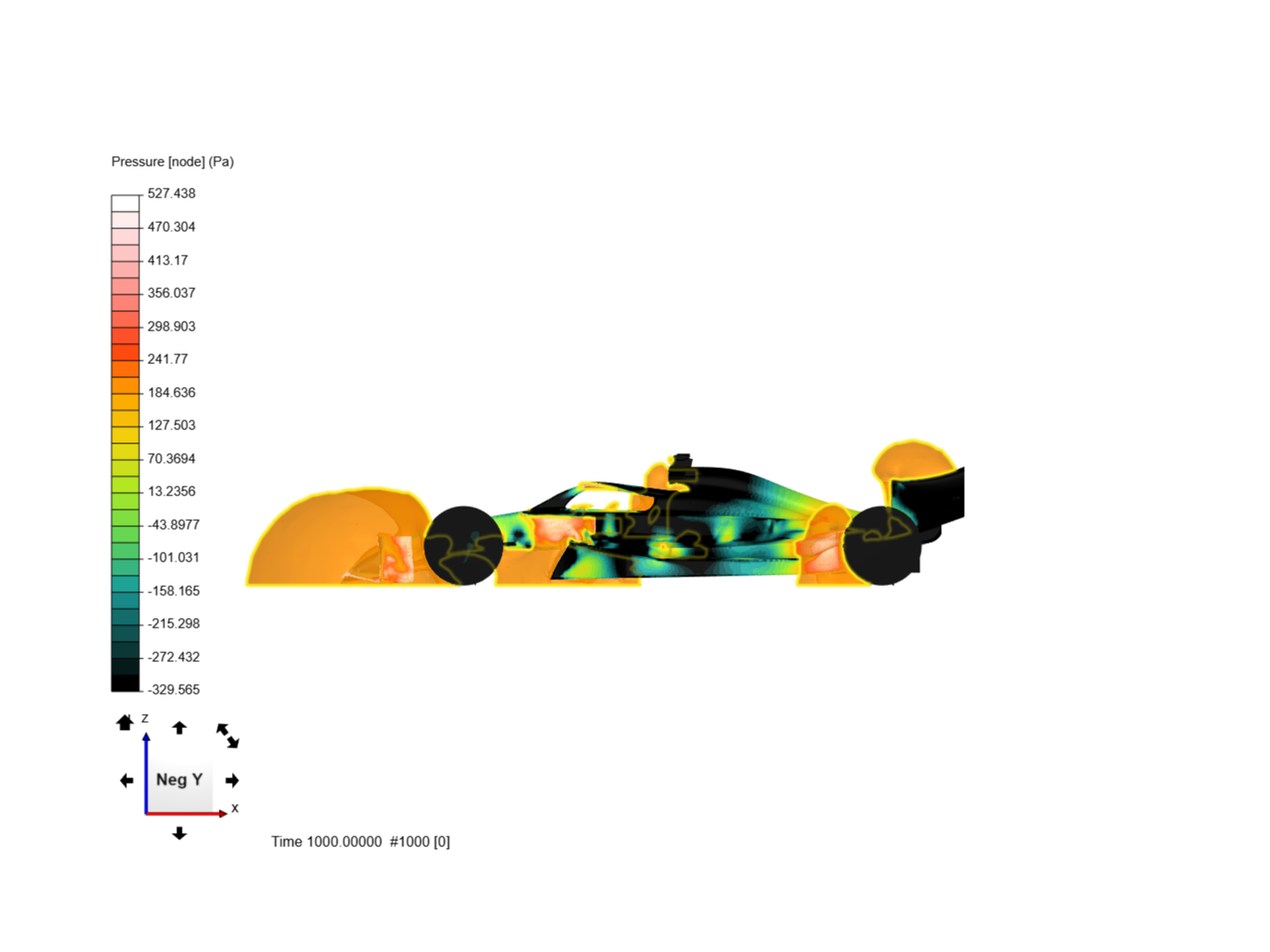I still find the floor the most fascinating piece of the puzzle, everything else is very prescribed. The floor is the area with the most freedom for creative interpretation, and there's a lot going on in order to make it work right. Those floor fences are critical both for altering the air pressure prior to the throat of the diffuser, and for managing the airflow that's trying to spill in laterally. The strakes and edge wing will have to work together for maximum effect. The wheels too act more like turbulent rudders with the wheel covers, and getting that to work with the floor will be a long iterative process.
There's a lot of furniture to manage the inboard wake of the tires, but those are hugely dependent on suspension geometry. For instance, toe out of the wheels affects the aero efficiency of the axle in question. Suspension travel, camber gain, and toe curves will have a bigger aero influence while the car is pitching, warping, yawing, rolling and so forth.
The floor will be so powerful that teams will use the rear wing mainly to tune the balance of the car, and this is a double edged sword, because if the floor loses downforce, through stalling or some other reason, you'll have a huge oversteery mess.
- Login or Register
No account yet? Sign up



